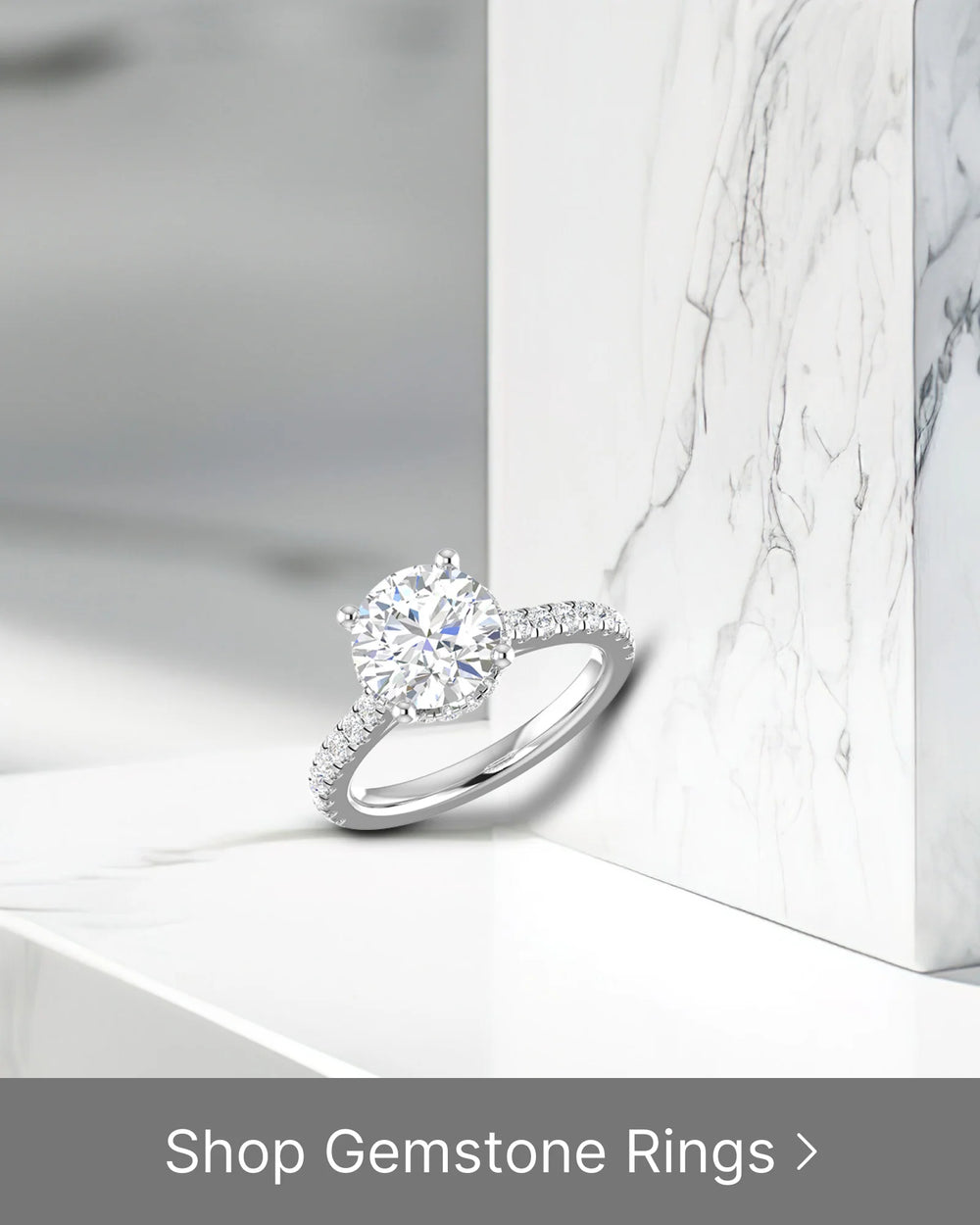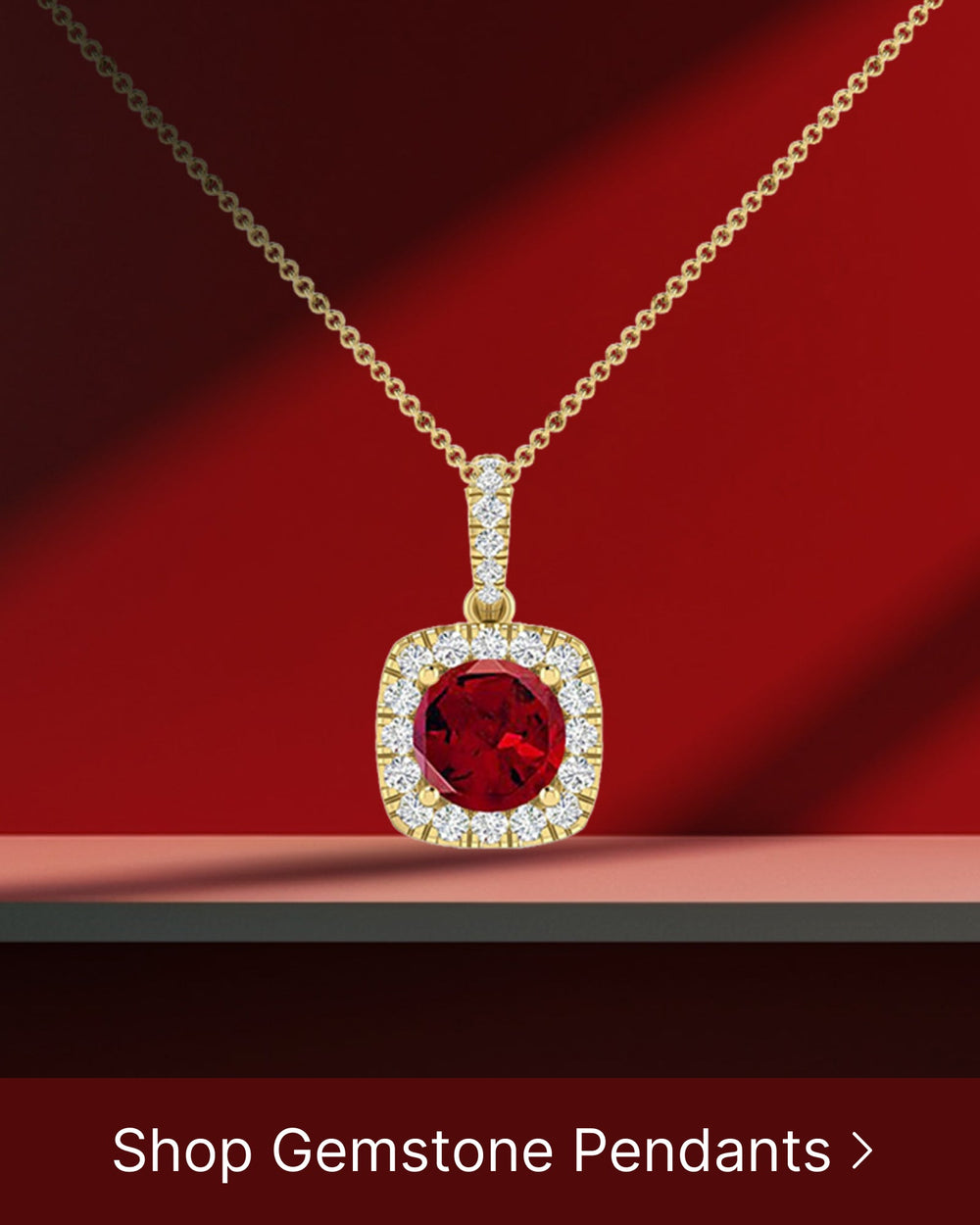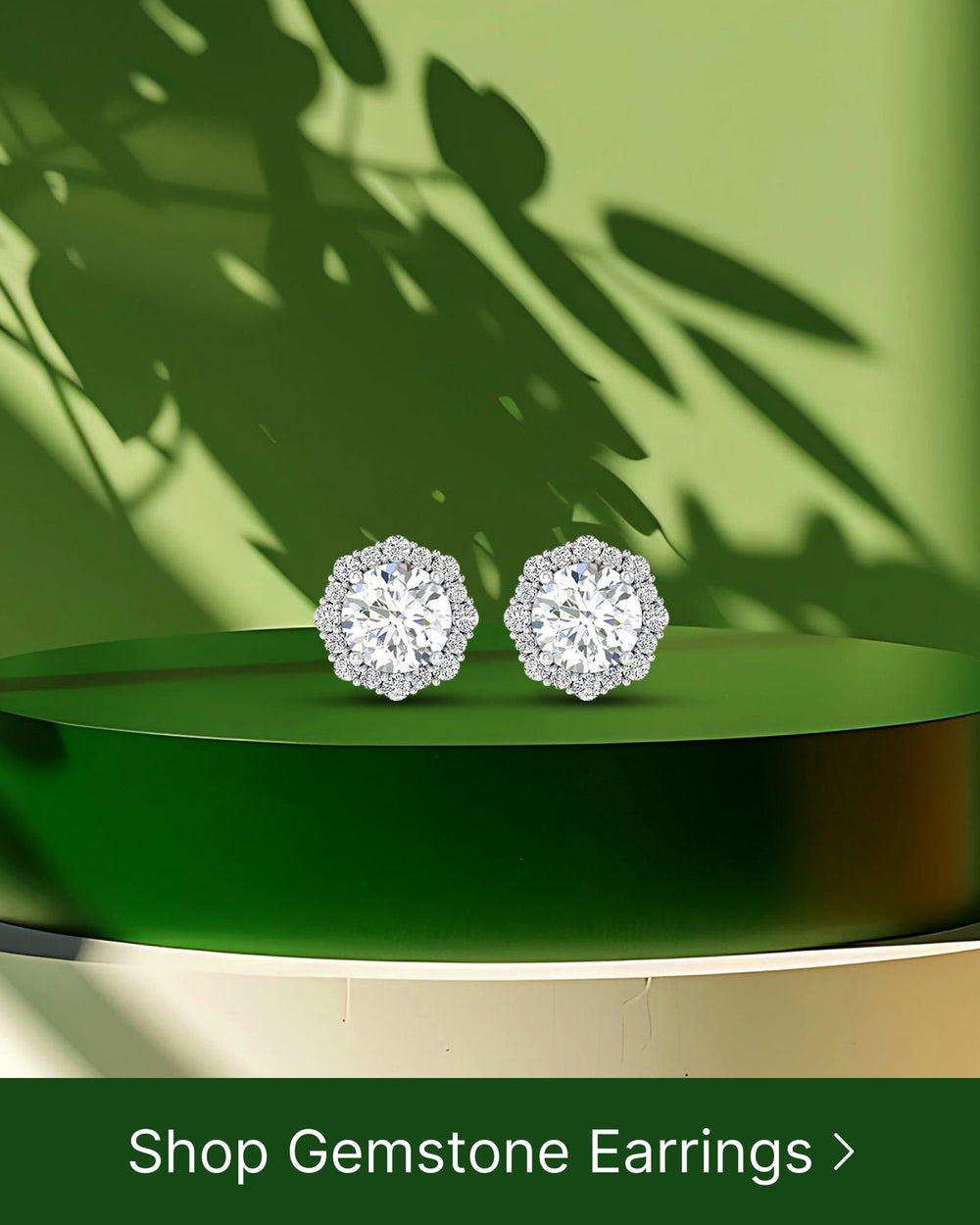In the world of diamonds, understanding the grading system is crucial. Whether you are in the market to buy a diamond or simply want to appreciate the beauty of these magnificent gemstones, having knowledge about diamond grades is essential. This comprehensive chart aims to provide you with a detailed understanding of diamond grading, covering the basics of diamond grading, delving into diamond clarity, exploring diamond color, understanding diamond cut, and assessing diamond carat weight.
The Basics of Diamond Grading
Diamond grading involves evaluating a diamond based on several factors known as the Four Cs: cut, color, clarity, and carat weight. Each of these attributes plays a significant role in determining the overall quality and value of a diamond.
The Four Cs of Diamond Grading
When it comes to diamond grading, the Four Cs are of utmost importance. They consist of:
- Cut: This refers to how well a diamond is cut and shaped. The cut affects the diamond's brilliance and sparkle.
- Color: Diamonds come in a range of colors, from colorless to fancy colored. Colorless diamonds are considered the most valuable.
- Clarity: Clarity measures the presence of any internal or external flaws in a diamond. The fewer the flaws, the higher the clarity grade.
- Carat Weight: Carat weight refers to the size and weight of a diamond. One carat is equal to 200 milligrams.
Importance of Diamond Grading
Diamond grading helps buyers and sellers communicate effectively about a diamond's quality and value. It ensures that everyone involved in the diamond trade understands the characteristics and attributes of a particular diamond, facilitating fair transactions and informed decision-making.
Let's delve deeper into each of the Four Cs to understand their significance in diamond grading.
Cut
The cut of a diamond is crucial as it directly impacts the stone's ability to reflect light and create that mesmerizing sparkle. A well-cut diamond will have precise angles and proportions, allowing light to enter and bounce back with maximum brilliance. On the other hand, a poorly cut diamond may appear dull and lifeless, regardless of its color or clarity. The art of diamond cutting requires skill and precision to unleash the stone's true beauty.
Color
Color is another essential aspect of diamond grading. While diamonds are commonly associated with a colorless appearance, they can actually exhibit a range of hues. The Gemological Institute of America (GIA) grades diamond color on a scale from D (colorless) to Z (light yellow or brown). Colorless diamonds, graded D-F, are highly sought after due to their rarity and ability to reflect light effortlessly. However, fancy colored diamonds, such as pink, blue, or yellow, can also be incredibly valuable and prized for their unique and vibrant hues.
Clarity
Clarity refers to the presence or absence of internal and external flaws, known as inclusions and blemishes, respectively. These imperfections can affect the diamond's brilliance and overall appearance. The GIA grades clarity on a scale ranging from Flawless (no inclusions or blemishes visible under 10x magnification) to Included (inclusions visible to the naked eye). Diamonds with higher clarity grades are more valuable and desirable, as they are considered to be more rare and visually appealing.
Carat Weight
Carat weight is often associated with the size of a diamond, but it actually refers to the weight of the stone. One carat is equivalent to 200 milligrams or 0.2 grams. While carat weight does contribute to a diamond's value, it is important to note that size alone does not determine a diamond's quality. The other Three Cs, particularly cut, color, and clarity, also significantly impact a diamond's desirability and worth. Therefore, it is crucial to consider all aspects of a diamond's grading when evaluating its overall value.
Understanding the Four Cs and their role in diamond grading allows both buyers and sellers to make informed decisions. By considering these factors, individuals can assess the quality and value of a diamond accurately, ensuring fair transactions and satisfying purchases. Whether you are a diamond enthusiast or a professional in the diamond trade, a comprehensive understanding of the Four Cs is essential for navigating the world of diamonds with confidence.
Delving into Diamond Clarity
Clarity is a crucial aspect of diamond grading as it determines the presence of any imperfections, known as inclusions, within a diamond. The clarity grade of a diamond is determined by the size, number, location, and visibility of these inclusions.
When it comes to evaluating the clarity of a diamond, it is essential to understand the various factors that contribute to its overall grade. These factors include the size and type of inclusions, their visibility to the naked eye, and their impact on the diamond's overall appearance.
Let's take a closer look at the clarity grading scale to better understand how diamonds are categorized based on their clarity characteristics.
Clarity Grading Scale
Diamonds are graded on a clarity scale that ranges from Internally Flawless (IF) to Included (I). This scale helps gemologists and diamond experts to communicate the clarity characteristics of a diamond in a standardized manner. The clarity grading scale includes the following grades:
- Flawless (FL): Diamonds in this category have no internal or external inclusions visible under 10x magnification. They are extremely rare and highly valued.
- Internally Flawless (IF): Diamonds in this category have no internal inclusions visible under 10x magnification but may have minor surface blemishes.
- VVS1 (Very, Very Slightly Included 1): Diamonds in this category have minute inclusions that are extremely difficult to detect even under 10x magnification.
- VVS2 (Very, Very Slightly Included 2): Diamonds in this category have slightly larger inclusions than VVS1 diamonds but are still challenging to detect under 10x magnification.
- VS1 (Very Slightly Included 1): Diamonds in this category have small inclusions that are visible under 10x magnification but are considered minor.
- VS2 (Very Slightly Included 2): Diamonds in this category have slightly larger inclusions than VS1 diamonds but are still considered minor.
- SI1 (Slightly Included 1): Diamonds in this category have noticeable inclusions that are easily visible under 10x magnification but may not be visible to the naked eye.
- SI2 (Slightly Included 2): Diamonds in this category have larger and more obvious inclusions than SI1 diamonds but are still not typically visible to the naked eye.
- I1 (Included 1): Diamonds in this category have inclusions that are easily visible to the naked eye and may affect the diamond's brilliance and transparency.
- I2 (Included 2): Diamonds in this category have larger and more prominent inclusions than I1 diamonds, which can significantly impact their overall appearance.
- I3 (Included 3): Diamonds in this category have numerous and significant inclusions that are easily visible to the naked eye and can greatly affect the diamond's beauty.
Factors Affecting Diamond Clarity
Several factors influence a diamond's clarity, and it is important to consider these factors when evaluating a diamond's clarity grade.
The size of inclusions plays a significant role in determining a diamond's clarity grade. Smaller inclusions are generally less visible and have a lesser impact on the overall appearance of the diamond. On the other hand, larger inclusions can be more noticeable and affect the diamond's brilliance and transparency.
The type of inclusions also affects a diamond's clarity. Some inclusions, such as feathers or crystals, may have a minimal impact on the diamond's appearance, while others, like clouds or knots, can be more visible and affect its beauty.
Visibility is another crucial factor to consider. Inclusions that are not visible to the naked eye are generally considered less significant, while those that are easily visible can lower the diamond's clarity grade.
Lastly, the overall impact of inclusions on the diamond's appearance should be taken into account. Even if the inclusions are small or not easily visible, they can still affect the diamond's brilliance, fire, and scintillation.
By considering these factors, diamond experts can accurately assess a diamond's clarity grade and provide valuable information to potential buyers.
Exploring Diamond Color
Diamond color plays a vital role in determining a diamond's beauty and value. Despite their reputation for being white or colorless, diamonds can exhibit a range of colors, including shades of yellow, brown, and even rare and valuable fancy colors.
The Diamond Color Grading System
Color grading for diamonds is done on a scale that ranges from D (colorless) to Z (light yellow or brown). The scale includes the following grades:
- D (Colorless)
- E (Colorless)
- F (Colorless)
- G (Near Colorless)
- H (Near Colorless)
- I (Near Colorless)
- J (Near Colorless)
- K (Faint Yellow)
- L (Faint Yellow)
- M-Z (Light Yellow to Brown)
Impact of Color on Diamond Value
The color grade of a diamond can significantly impact its value. Colorless diamonds (grades D-F) are the most sought after and command higher prices. However, the presence of certain fancy colors, such as pink or blue, can greatly increase a diamond's value due to their rarity.
Understanding Diamond Cut
Diamond cut refers to both the shape of a diamond and how well it has been cut and faceted. Cut is critical as it directly affects a diamond's brilliance, fire, and overall beauty.
Cut Grades and Their Meanings
Diamonds are graded on a scale ranging from Excellent to Poor. The cut grades include the following:
- Excellent
- Very Good
- Good
- Fair
- Poor
The Role of Cut in Diamond Brilliance
The quality of a diamond's cut directly impacts how well it reflects and refracts light, resulting in its brilliance and fire. A well-cut diamond will have optimal proportions, symmetry, and polish, maximizing its sparkle and beauty.
Assessing Diamond Carat Weight
Carat weight is perhaps the most well-known aspect of diamond grading as it refers to the size and weight of a diamond. However, carat weight alone does not determine a diamond's value; it must be considered in conjunction with the other three Cs.
Carat Weight and Diamond Size
Carat weight directly affects a diamond's size, with larger carat weights generally resulting in larger diamonds. However, factors such as the cut and depth of the diamond can also influence how the carat weight is distributed, impacting its size appearance.
Carat Weight's Influence on Diamond Price
Generally, diamonds with higher carat weights command higher prices due to their rarity. However, other factors such as the diamond's cut, color, and clarity also play a significant role in determining its overall value.
In conclusion, understanding diamond grades is essential for anyone interested in diamonds. By comprehending the Four Cs of diamond grading, delving into diamond clarity, exploring diamond color, understanding diamond cut, and assessing diamond carat weight, you can make informed decisions when purchasing or appreciating these exquisite gemstones. Remember, each diamond is unique, and finding the perfect balance of the Four Cs that suits your preferences and budget is key to finding a truly special diamond.






